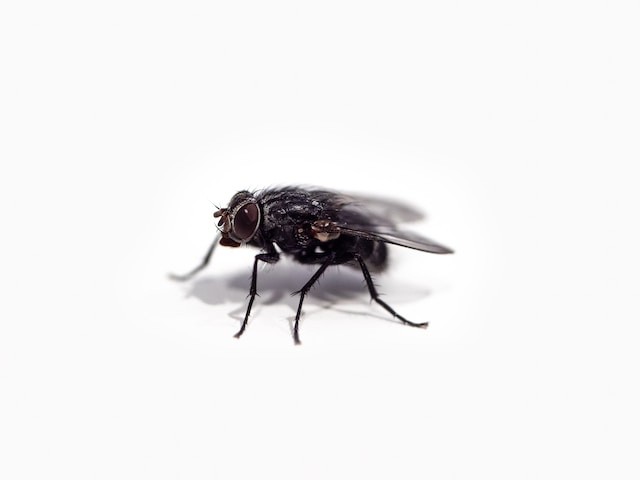Plastic is one of the most widely used materials in the world, but it also poses a serious threat to the environment.
Plastic waste accumulates in landfills, oceans, and wildlife habitats, where it can take hundreds of years to degrade.
In addition, the majority of plastics come from fossil fuels, which increase greenhouse gas emissions and cause climate change.
Scientists are investigating for alternate sources of biodegradable polymers that might be produced from waste and renewable resources to address this issue.
One such source could be the carcasses of black soldier flies, which are being raised for animal feed and waste management.
Biodegradable plastics from fly carcasses

Black soldier flies are insects that have a remarkable ability to consume organic waste and convert it into proteins and fats.
Their larvae are rich in nutrients and can be used as feed for livestock, poultry, and fish.
The adult flies, however, have a short lifespan and do not feed at all. They are usually discarded after they mate and lay eggs.
But researchers from Texas A&M University have found a way to use these dead flies to make biodegradable plastics.
They discovered that the fly carcasses contain a large amount of chitin, a sugar-based polymer that forms the exoskeleton of insects and crustaceans.
Chitin is also a precursor for chitosan, a biopolymer that has many applications in medicine, agriculture, and biotechnology.
The researchers extracted chitin from the fly carcasses using chemical treatments and then converted it into chitosan using enzymes.
They then used chitosan to create various types of bioplastics, such as hydrogels, polycarbonates, and polyurethanes.
These bioplastics have different properties and potential uses, such as water retention, drug delivery, tissue engineering, and packaging.
Pros and cons of fly-based bioplastics
The researchers claimed that using fly-based bioplastics has several advantages over conventional plastics.
First, they are biodegradable and digestible, which means they can be broken down by microorganisms or enzymes without leaving harmful residues.
Second, they are derived from a waste product that has no other competing uses, unlike other natural sources of bioplastics such as glucose or starch.
Third, they could reduce the dependence on fossil fuels and lower the carbon footprint of plastic production.
Before fly-based bioplastics are extensively used, there are still significant difficulties and restrictions that must be solved.
To boost the yield and quality of chitin and chitosan, for instance, the researchers must optimize the extraction and conversion procedures.
They also need to test the performance and safety of the bioplastics in various conditions and applications.
Moreover, they need to assess the economic feasibility and environmental impact of scaling up the production and distribution of fly-based bioplastics.
The researchers hoped that their work will inspire more innovation and collaboration in the field of bioplastics and contribute to solving the plastic pollution problem.
They also envisioned a circular economy where insects can consume waste plastics and then be used to make new plastics.
Cassidy Tibbetts, a graduate student working on the project, explained that they are taking something that is essentially trash and turning it into something useful.
In the end, they like the insects to consume the leftover plastic as their food source, and then harvest them once more and gather their parts to create new plastics.
Therefore, the insects would serve as both the source and the final consumer of the waste plastics.
© 2025 NatureWorldNews.com All rights reserved. Do not reproduce without permission.





